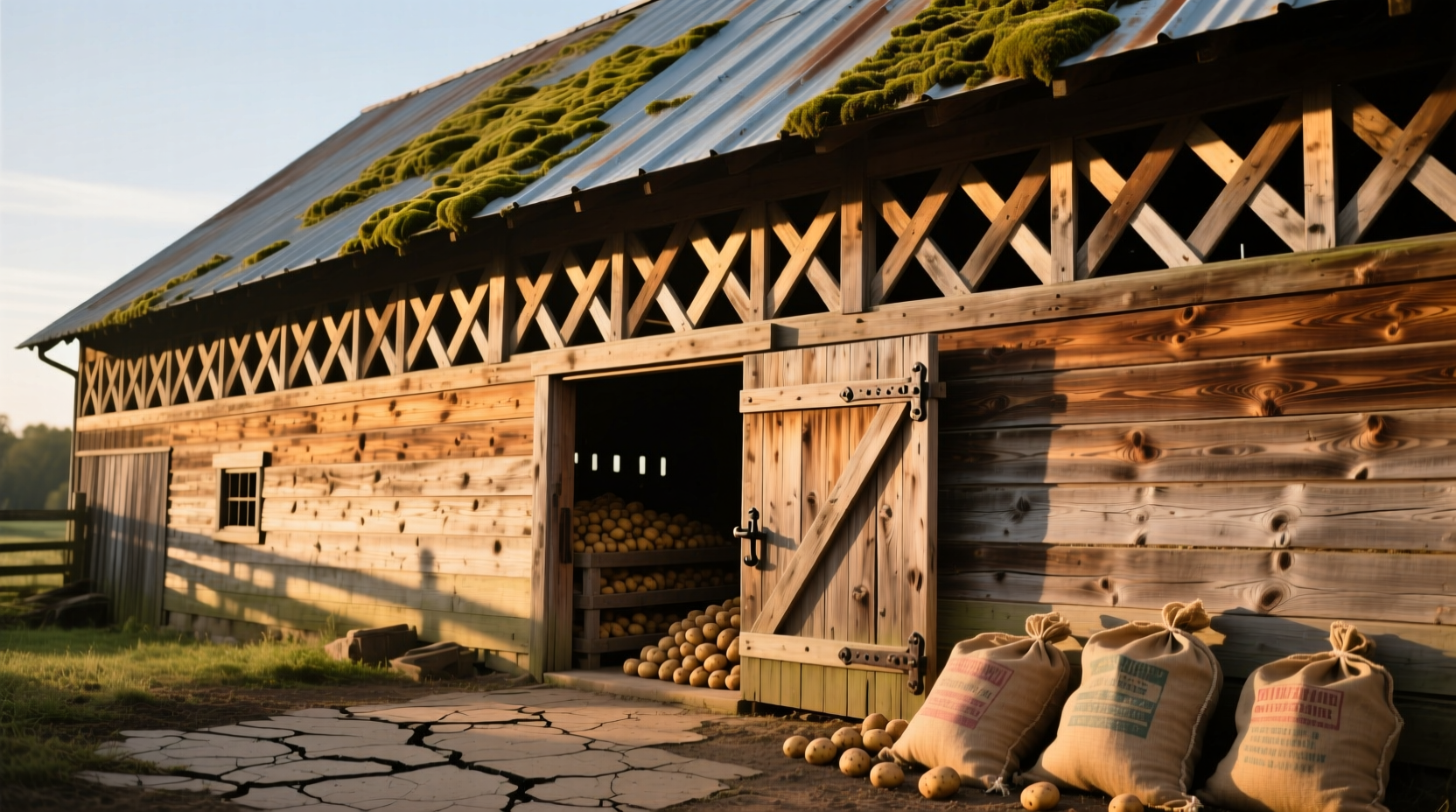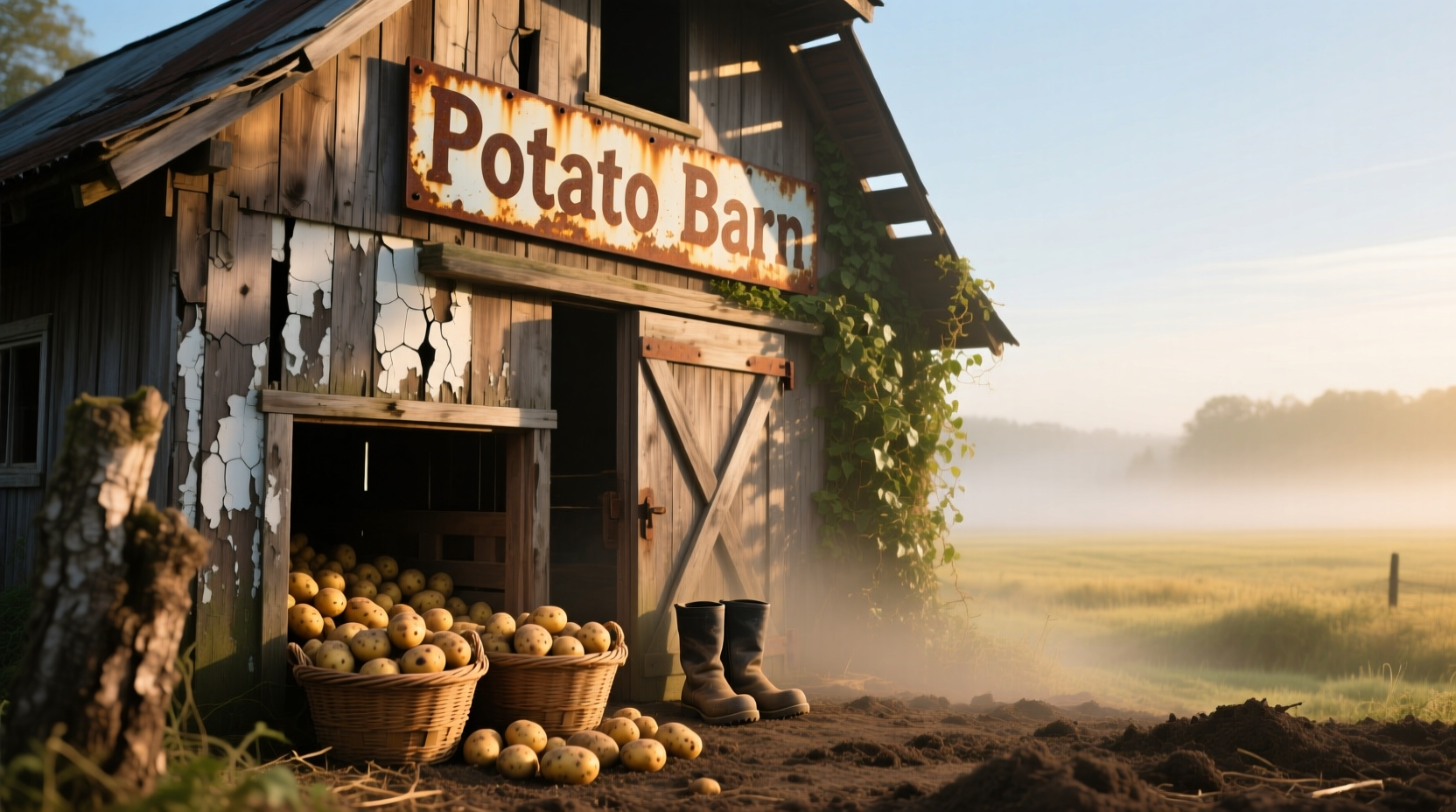Ever wondered why your potatoes sprout or turn green in the pantry? The answer lies in centuries of agricultural wisdom captured in traditional potato storage structures. Whether you're searching for the famous restaurant or seeking to understand historical farming practices, this guide reveals the science and history behind proper potato preservation that keeps this staple crop edible for months after harvest.
What Exactly Is a Potato Barn?
When farmers harvested potatoes before modern refrigeration, they needed specialized structures to store their crop through winter. Potato barns weren't just sheds—they were carefully engineered environments designed to maintain the precise conditions potatoes require for long-term storage.
Unlike root cellars that served multiple crops, potato barns featured specific design elements: elevated wooden floors for airflow, adjustable vents for humidity control, and thick insulation to maintain stable temperatures. These structures allowed farmers to enjoy their potato harvest throughout the winter months without spoilage.
| Storage Method | Temperature Range | Humidity Level | Max Storage Duration |
|---|---|---|---|
| Traditional Potato Barn | 45-50°F (7-10°C) | 90-95% | 4-6 months |
| Modern Commercial Storage | 38-40°F (3-4°C) | 95% | 8-10 months |
| Home Pantry Storage | 50-60°F (10-15°C) | 60-70% | 1-2 months |
From Farm to Table: The Evolution of Potato Storage
Potato storage techniques have evolved significantly since potatoes were first cultivated in the Andes mountains over 7,000 years ago. Indigenous farmers developed sophisticated methods to preserve potatoes through freeze-drying (creating \"chuño\") before European contact.
Timeline of Potato Storage Evolution:
- 8000 BCE: Andean civilizations develop freeze-drying techniques for potatoes
- 1530s: Spanish conquistadors introduce potatoes to Europe
- 1800s: Specialized potato barns become common on North American farms
- 1920s: First mechanical refrigeration systems adapted for potato storage
- 1950s: Controlled atmosphere storage extends shelf life significantly
- 1970s: The Potato Barn restaurant chain opens, celebrating potato cuisine
- Today: Advanced storage maintains potatoes for up to 10 months with minimal loss
The Science Behind Successful Potato Storage
Potatoes continue to live after harvest, which explains why proper storage matters. According to research from the USDA Agricultural Research Service, potatoes require specific conditions to remain dormant:
- Temperature control: Below 45°F triggers sugar conversion (making fries dark when fried), while above 50°F encourages sprouting
- Humidity balance: Too dry causes shriveling; too moist promotes rot
- Ventilation: Essential to remove ethylene gas that accelerates sprouting
- Darkness: Prevents chlorophyll development (greening) which produces toxic solanine
Interestingly, potatoes stored in traditional barns often developed better flavor than those in modern cold storage. The Cornell University Potato Research Program found that potatoes stored at slightly higher temperatures maintain more complex starch structures that enhance texture and taste when cooked.

Practical Storage Tips You Can Use Today
You don't need a dedicated potato barn to keep your potatoes fresh. Modern homes can replicate key elements of traditional storage with these evidence-based methods:
Creating Your Own Mini Potato Barn
Follow these steps to maximize your potato shelf life:
- Choose the right location: Find a cool, dark spot away from heat sources (not next to your stove or refrigerator)
- Control humidity: Store potatoes in a ventilated container like a cardboard box or mesh bag (never plastic)
- Separate from other produce: Keep potatoes away from onions and apples which release gases that promote sprouting
- Check regularly: Remove any soft or sprouting potatoes immediately to prevent spoilage spreading
Common Storage Mistakes to Avoid
Based on consumer reports from the FDA Food Safety Education, these practices significantly reduce potato shelf life:
- Storing potatoes in the refrigerator (causes sugar conversion)
- Washing potatoes before storage (adds moisture that promotes rot)
- Keeping potatoes in direct sunlight (causes greening and solanine production)
- Storing cut potatoes without acidulated water (leads to rapid oxidation)
The Potato Barn Restaurant: A Modern Celebration of Potatoes
While not directly related to agricultural storage, the restaurant chain named \"The Potato Barn\" has become synonymous with creative potato cuisine since its founding in the 1970s. With locations primarily in the northeastern United States, the restaurant showcases how proper storage enables culinary excellence.
What makes this connection meaningful? The restaurant's name pays homage to the agricultural heritage of potato farming. Their menu features dishes that highlight the quality achievable when potatoes are properly stored and handled—something that would be impossible without understanding the principles developed in traditional potato barns.
Why This Knowledge Matters Today
Understanding traditional potato storage isn't just historical curiosity—it has practical implications for reducing food waste and improving nutrition. According to the UN Food and Agriculture Organization, approximately 30% of potatoes are lost between harvest and consumption, often due to improper storage.
By applying principles from historical potato barns, households can significantly reduce their food waste while enjoying better tasting potatoes. The next time you're tempted to toss sprouting potatoes, remember that with proper storage conditions, those same potatoes could have remained fresh and delicious for months.











 浙公网安备
33010002000092号
浙公网安备
33010002000092号 浙B2-20120091-4
浙B2-20120091-4